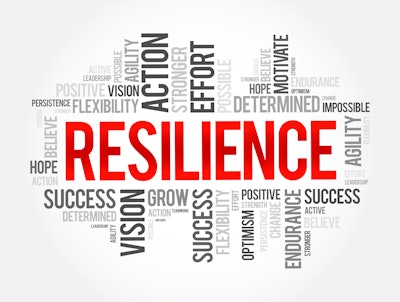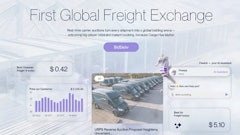
The recent closure of Interstate 40 (I-40) due to severe flooding elicited renewed concerns throughout the supply chain industry by causing significant disruptions and forcing businesses to adapt quickly. This critical transportation artery, spanning from California to North Carolina, plays a vital role in the movement of goods across the United States. The closures in both Tennessee and North Carolina, caused by unprecedented rainfall and subsequent flooding from Hurricane Helene, have exposed vulnerabilities in our nation's infrastructure and supply chain networks.
Given this extraordinary event, procurement experts are examining key impacts of I-40 closures on supply chains and the broader economy, while also sharing practical strategies businesses can use to reduce the effects of these disruptions.
Immediate Impacts on Supply Chains
The immediate impacts of transportation disruptions on supply chains are significant. Truck deliveries are delayed, transit times for goods increase, and transportation costs rise due to the need to use alternate routes. These costs are often passed on to consumers in the form of higher prices. In addition, the closure of I-40 can lead to congestion on local roads and smaller highways as trucks are forced to detour.
The closure of a major cross-country highway, such as I-40, can significantly impact transportation and logistics costs. Trucks are forced to take longer alternate routes, resulting in higher fuel and labor expenses. Businesses may also face increased costs for warehousing and storage due to delayed shipments. Furthermore, alternate routes often become congested, causing additional delivery delays and escalating transportation costs. Understanding these impacts is crucial for businesses to navigate logistical challenges effectively.
For example, if the closure occurs in California, it could disrupt the flow of goods from the port of Barstow to the rest of the country. These ports are the two busiest container ports in the United States, handling a massive volume of imports from Asia along with consumer goods, raw materials, and manufacturing components.
Long-Term Consequences of Transportation Route Disruptions
The closure of a major transportation route can trigger a range of ripple effects, significantly affecting supply chains and the economy. Temporary shortages of goods often arise as supply chains are disrupted, posing challenges for businesses relying on just-in-time inventory management.
Moreover, it can impact other transportation modes, such as rail lines and river barges, compounding supply chain delays. Over the long term, industries that depend on one route for transporting goods may face substantial economic repercussions, including disrupted operations, lost sales, and reduced productivity. Businesses must prepare for these long term challenges.
Effective Mitigation Strategies for Transportation Disruptions
Some strategies businesses can implement include adjusting inventory levels to ensure they have enough stock to meet customer demand during supply chain disruptions. They can also diversify suppliers to reduce reliance on a single source, ensuring access to goods even if one supplier is affected.
Businesses can also implement alternative logistical arrangements, such as using different modes of transportation or shipping goods from different locations. This can help to ensure that they can still get their goods to their customers on time.
Risk Management and Preparedness for Supply Chain Disruptions
Businesses should develop a comprehensive risk management plan to address supply chain disruptions. This plan should identify potential risks, assess their likelihood, and outline strategies for mitigation. Investing in supply chain visibility tools can enable rapid responses to disruptions. By building redundancy into supply networks, businesses can reduce vulnerability to single points of failure. Additionally, collaboration with industry partners and government agencies can strengthen overall supply chain resilience.
As businesses and supply chain professionals work to mitigate long-term impacts from infrastructure failures, the importance of preparedness and resilience has become clear. The ability to quickly adapt to unforeseen events and maintain operational continuity will be critical in today’s unpredictable business environment.
The need for ongoing investment in both physical infrastructure and adaptive supply chain strategies has never been more critical. Moving forward, collaboration between businesses, policymakers, and supply chain experts will be essential in building resilient and flexible supply networks capable of withstanding future disruptions.



















